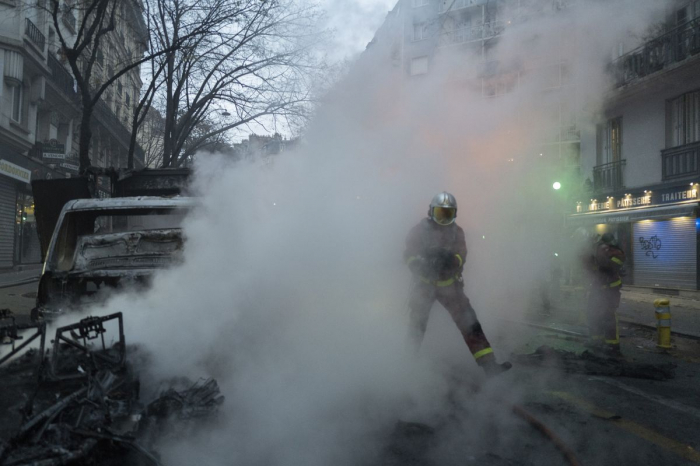Thousands of people have taken to French streets over the past three years to express anger over rising social and economic inequalities. The outrage is now centered on tougher new security laws and police abuses. Large demonstrations were held in major cities across the country at the end of November.
1. What triggered the most recent protests?
An article in a draft security bill would ban posting or broadcasting videos or photos of police with intent to cause them “physical or psychological harm.” Violators could face up to a year in prison. Critics say that provision, known as Article 24, would inhibit the publication of images by journalists and citizens, removing a key tool in holding police to account and exposing abuses. Jean-Louis Debre, ex-president of the Constitutional Council, called Article 24 “absurd” considering that legislative tools already exist to fight against the propagation of hatred online. Adding fuel to the protests was the release of footage showing police officers beating a Black music producer at the entrance of his Paris studio.
2. How did the government respond?
Three police officers were charged on Nov. 30, with two of them placed in custody while the investigation continues. In a Facebook and Twitter statement, President Emmanuel Macron said the videos brought “shame on us” and condemned violence both by and against the police. Then the parliament majority announced it would completely rewrite Article 24. The government plans a “major survey” in January to gauge racism and discrimination in French society. It also plans a national platform to report incidences of discrimination.
3. What’s the point of the legislation?
The number of officers wounded on duty and targeted by violence has doubled over the past 15 years; in recent protests alone, 98 officers were injured, according to the government. It wants to do more to protect them. Interior Minister Gerald Darmanin often cites the 2016 fatal stabbing of a police officer and his partner in front of their toddler by a jihadist as an example of the dangers faced by law enforcers. Macron is also renewing his focus on law-and-order as he reaches out to traditional conservative voters ahead of presidential elections in 2022. It was a group of lawmakers within Macron’s own party that pushed for the legislation, but during the first reading in parliament, 10 deputies from the president’s party voted against it and 30 abstained. The bill still passed by a large majority.
4. What happens now?
Macron’s government has tried to hold the line in the face of criticism from civil society and protesters. Authorities acknowledge shortcomings, but insist systemic violence doesn’t exist within the police force. Other provisions in the draft security legislation that have caused alarm would expand the powers of the police by giving them access to security cameras and grants them the right to deploy drones equipped with facial recognition technology to monitor public demonstrations. Opponents say that the freedom of assembly and data privacy is at risk. Another piece of legislation, the so-called separatism law, aims to fight organizations and individuals that threaten the unity and secular values of the French Republic. But groups like Human Rights Watch have expressed concern that actions the government says are intended to counter radical Islam could fuel Islamophobia.
5. Have protests increased under Macron?
According to the Ministry of the Interior, protests under Macron haven’t attracted as many people as under other presidents. Macron swept to power in May 2017 with a promise to radically reshape the country. That was bound to cause upset in a nation where citizens are known for taking to the streets to express their anger. After Macron took office, one of the largest trade unions demonstrated against his planned overhaul of labor laws. The following year brought the Yellow Vest protests triggered by a planned tax rise on fuel. Protests at times turned violent. In December 2019, strikes and protests brought Paris to a standstill as Macron sought to push through his pension reform. Some rallies demanding racial justice followed the killing of American George Floyd at the hands of police officers in Minneapolis.
The Bloomberg
More about:
















































